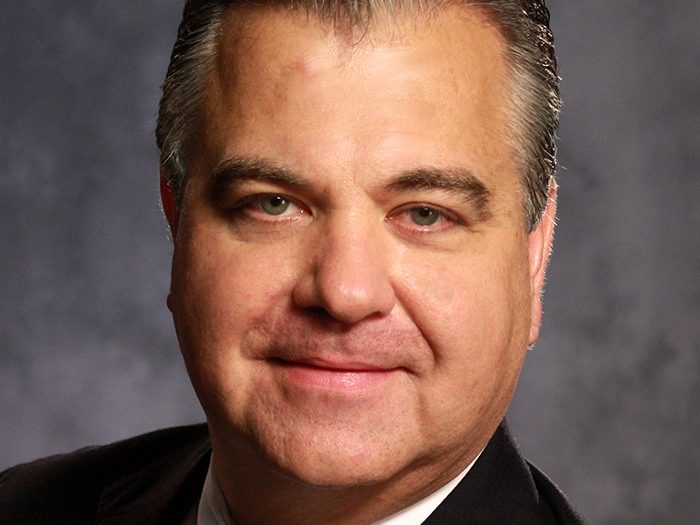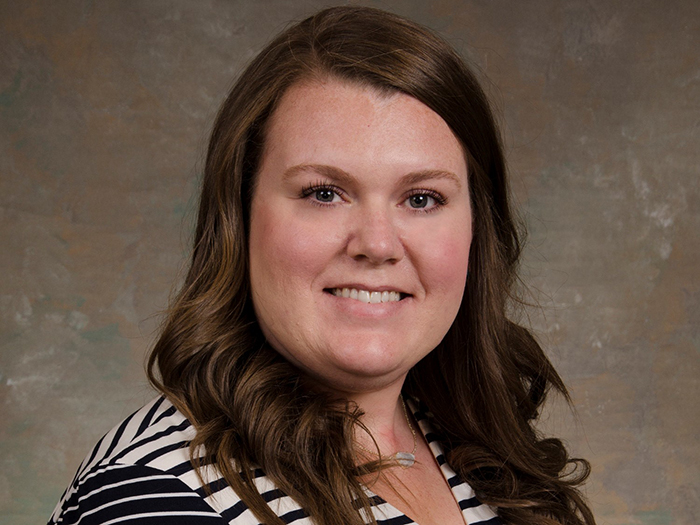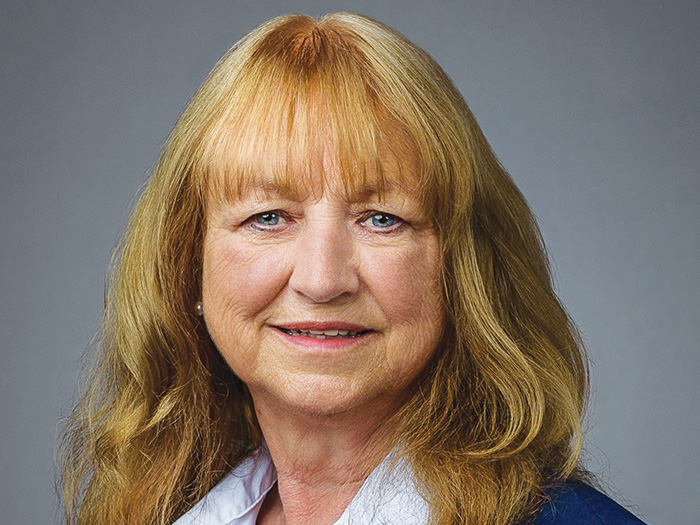11 Questions for Aon’s Joe Peiser

In August of 2021, Aon recruited Willis Towers Watson veteran Joe Peiser to be its head of commercial risk for North America.
This spring, Dan Reynolds, the editor-in-chief of Risk & Insurance, caught up to Peiser for an interview. What follows is a transcript of that discussion, edited for length and clarity.
Risk & Insurance: Thanks for the opportunity, Joe. For starters, we were curious about the impacts that some of these macroeconomic factors like supply chain problems and inflation are having on your clients.
Joe Peiser: Supply chain has been a top three risk for the last couple of years. Many of our clients are asking if there is any advice we can provide. They want to understand what they should be thinking about.
There is not an off-the-shelf insurance solution. There have been supply chain insurance products in the past but they didn’t sell. The reason they didn’t sell is because if you could provide all the information that the underwriters wanted, you wouldn’t have a supply chain problem.
But there are a couple of aspects to it where we know that Aon can add value.
For example, we are helping clients map their supply chain and then work with them to examine their contracts between their suppliers. That is a frontier that is not well-trodden.
There’s an avenue there where you can put more safeguards into the contracts so that the suppliers must have insurance. That way, you’re not relying on contingent business interruption insurance so much. That’s an area that we’re exploring.
Contingent business interruption coverage has existed forever and has gotten a lot of scrutiny in the hard market because of issues like the chip shortage.
We are working with clients and insurers to say, “What kind of information can we provide to you, Mr. Underwriter, Ms. Underwriter, that would make you comfortable enough to offer a higher limit?”
Because that contingent business interruption is a valuable cover and it’s one that is very much part of the supply chain risk management picture.
R&I: Are you optimistic about the ability of technology, artificial intelligence, for example, to scan those contracts, or look at that supply chain and say, yes, this is a risk we can take on?
JP: I remember when just-in-time inventory was becoming the thing. There were plenty of us at the time who knew it was a problem waiting to happen. Now it’s happened.
And we’re seeing companies adjust their supply chains. They’re going from just-in-time to just-in-case. So, they want to have more inventory or additional suppliers and do good risk management. Well, that changes the risk profile for the company. If you now have bigger inventories in certain warehouses, are you paying attention to that risk exposure? We’re advising clients around how their risk profile will change as they change their supply chains.
R&I: Sticking with the client side of things and talking more about inflation now, similar question, what impact are you seeing? What kind of questions are clients asking you and your team?
JP: Most of the questions are coming from insurance companies because there has been a concern on the underwriting side about the credibility of property values for quite some time. And now it’s become a major issue because of inflation.
We’re seeing the need to adjust values considerably and are raising this as a potential issue with clients.
Some valuation firms and insurers have said that even if you had correct values in 2021, you’re probably 15% underwater today. Well, not many had correct values in 2021. And we get concerned as brokers that insurers may start to impose coverage restrictions, like margin clauses.
As painful as it is to pay a higher premium because of adjusted values, there’s nothing more painful than having underinsured loss.
We’re seeing a lot of push from insurers asking if our clients are paying attention to this and what they are they doing about this.
We then have customers asking if they should adjust their limits based on inflation or if they are adequately insured. Now, what hasn’t happened yet is a dramatic inflationary impact on medical costs, but that could happen down the line.
R&I: I appreciate that. If we could talk about “the market” for a second, there are various phrases to describe it, you can call it the transitioning market. You can call it a lull in the market. A confusing market, perhaps.
JP: We use decelerating. It’s not soft. When people start talking about softening, they are misusing the word, softening means price declines. We’re not seeing much of that.
R&I: And it varies of course, from line to line, but are there lines that are more problematic or the discussions between your clients and the carriers are just more challenging or there is more work to be done?
JP: Cyber. Cyber is still extremely challenging with mid-to-high double digit increases. Everything else is moderating, decelerating. We’re seeing generally single digit increases. We’re seeing a small percentage of clients seeing rate decreases or even price decreases.
What’s been interesting with inflation is that, and with economic recovery, we’re seeing exposures go up. So oftentimes clients are ending up with a bit of a premium increase, but actually a rate decrease because their exposures have gone up. Cyber is a different story. The Cyber market is still maturing and dealing with a massive increase in loss activity. It hasn’t found anything close to equilibrium yet.
Now excess liability I think is going to be interesting for the next couple of years, because there was a lull in verdicts because the courts were shut.
So, we’re now at a point, we had a very difficult few years. Some of our clients saw triple-digit rate increases, dramatic reductions in capacity, all that’s kind of leveled out and now we’re looking at anywhere from five to 15% increases. What happens when we start to see more nuclear verdicts?
R&I: As a leader of a team, what do you see you as your biggest challenges?
JP: A couple things. One, the war for talent is dramatic across all industries. People across the insurance space are wondering what their value is and if they are being compensated appropriately. The turnover creates a distraction.
As a professional services firm, we are three things. We’re people, culture and structure. That’s really what we are. And the structure you hope supports the culture. The culture of the company gets dinged every time someone leaves. You hope it gets enhanced as you bring people in, but you’re not sure because you don’t know what you’re introducing into the culture.
So that’s a challenge.
R&I: How serious an issue is wage inflation?
JP: I’ve been managing people for a long time now. And I’m a believer that you have to have high-quality people. To say compensation doesn’t matter is completely naive. It does matter, but it’s not the only thing that matters. So you need to get your people into their comfort band with compensation, and then leadership matters, culture matters. Frankly, so does how competitive your company is. People want to work on a winning team.
All that starts to matter, but you got to get them in the right zone compensation wise. And I think the issue that wage inflation is creating right now is you’re seeing some people overcompensating for talent. And that’s because we have this labor shortage. And that’s not good. I don’t know where that’s going to end up.
R&I: What market areas do you find appealing?
JP: I’m happy to share that we have a forward focus on construction. We’re recruiting into that team because we see the emphasis on infrastructure as being very important, something we don’t want to miss.
So construction is an area that we’re focused on. Another area that we’re focused on is renewable energy. When you look at the prospects over the next 20 years for renewable energy, it’s going to be a lot of transfer of wealth from old energy to new energy.
And we want to be part of that. We want to be part of that for a lot of reasons. One, we think it’s good business. Two, we think it is positive from an ESG perspective.
R&I: When did you come over from WTW? Why the switch? What did you see that you wanted to do?
JP: I came over in August. I had an opportunity presented at Aon, which was just one of the significant roles in the industry. I got to meet some of the leadership of Aon, and I was impressed with the caliber of people. I was impressed with the culture.
I find Greg Case and Eric Andersen to be inspirational. They are a leadership team that has a vision, not just for Aon, but for the industry and the role of the industry in the global economic landscape. And I’ve never worked for a firm with such visionary leadership. They talk about closing the relevance gap, that resonates with me.
R&I: Well, Joe, thank you. Is there anything that you wanted to express to our readers or our listeners that we didn’t cover that you think may be important to express about your role or the company?
JP: I would like to offer some comments about Aon’s new operating model. We’ve organized ourselves in such a way that geographic boundaries aren’t going to get in the way. I think when companies come to a global professional services firm and one in particular like ours, I think clients expect that they’re getting global expertise, they’re getting global access to insurance companies, et cetera.
The truth is I’ve worked for global companies and it’s not always true. Everybody says it, okay. But they let P and L’s get in the way. And I think what Aon has done in this latest restructure is they’ve taken out those boundaries, so that I know I can look a client in the eye and say, we will get you the best deal in the marketplace, regardless of where you are, regardless where the insurance company is and regardless where the underwriter is.
I also can look them in the eye and say, if you have a problem in supply chain, I have a global group where I have people around the world who are available to you to advise and help with that.
And they’re not worried about, oh, who’s going to pay for my flight? We’ve taken care of those issues. So I think that’s dramatic. I think that’s going to start to over time, that’ll prove itself out.
Then the other aspect is by creating our global solution lines we now have a clear focus on building content and innovation. In fact our leadership, Greg and Eric, want us to be obsessed with innovation. We want to make sure that it’s not just something we’re doing on the side of the desk sometimes, we’ve got to do it all the time if we want to close that relevance gap.
R&I: When you use the word innovation, and you talk about resources, are you talking about technology resources?
JP: Not necessarily. I mean, most things involve technology today. Because if you want to create a new product, you have to have data primarily. So, it does involve technology, but not exclusively. We talk about three kinds of innovation, core, core plus, and transformative. So, core innovation is innovating our existing products, maybe our umbrella, maybe we should have a specialized endorsement for real estate firms, the Aon real estate endorsement on the umbrella. So that’s a core innovation.
Core plus is when we innovate across solution lines and/or geographies. And a great example of this Core plus innovation is a package where our D&O clients who are preparing for an IPO or have recently gone through an IP will get as part of their deal with Aon, a fixed amount of consulting hours for a governance consulting review which is a core competency in our consulting business.
And then there’s transformative innovation. So intellectual property, where we are a clear leader and market maker, would be example of a transformative innovation. We’re looking to do all three.
I am bullish about the state of the business today. Not just Aon but the whole business, because we’ve been through a hard market, again, it’s not over, but we’re now at the point where the insurers are finished remediating their books, they’re finished changing things, they’re looking for ways to grow, so they are primed to innovate. We see new capital coming into our business, all of whom are risk takers, different types, different appetites.
R&I: A lot of new MGA’s as we are seeing.
JP: A lot of MGAs coming in, there’s more and more capital markets coming in, looking for ways that they can find a position and they all want data. And then we have on the client side, like never before, I am seeing more and more clients have an awareness of the external volatility that they face. I think the pandemic has been a big jolt – clients have at least witnessed if not suffered catastrophic external volatility.
So, you have demand and now you have supply that is open to innovation. I think it’s a great time to be in our business. It’s a great time to be a broker because we work with pretty complicated products and it’s a complicated market and organizations need someone to help you navigate around. So I’m really bullish about it. &










